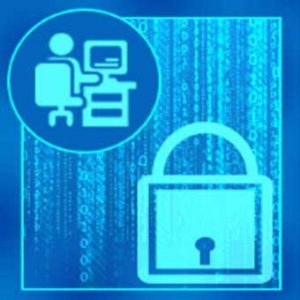 As threats have evolved, so have defenses. In the past, we didn’t have enough insight or data to adequately predict, recognize, and prevent threats. Today, there’s plenty of information available. The hard part is weeding through the data to see the patterns and trends that indicate there may be a security issue looking.
As threats have evolved, so have defenses. In the past, we didn’t have enough insight or data to adequately predict, recognize, and prevent threats. Today, there’s plenty of information available. The hard part is weeding through the data to see the patterns and trends that indicate there may be a security issue looking.
Going through data manually is time-consuming and can become all too routine. It’s easy to miss warning signals. Setting up filters, traps, and alerts can help, but it still requires you to go into the data source and scan it for problems.
“It’s very hard for analysts to look at 80 columns of a spreadsheet,” said Yang Cai, Director of CyLab’s Visual Intelligence Studio at Carnegie Mellon University. “Visualization makes it very easy to see the patterns.”
Using Data Visualization to Identify and Mitigate Cyber Attacks
The best approach is to use business intelligence tools to visually showcase your current state and compare it to historical data. This provides a visual reference that allows you to quickly identify anomalies. Rather than poring through data, data visualization gives you a quick, easy-to-identify way to see when something’s not right. You’ll see suspicious activity more quickly and be able to immediately drill down to the precise data to check it out.
Data visualization, through business intelligence tools, also significantly reduces the clutter that can come from different data sources. IT teams may use logs, alerts, notifications, and various security software as part of the monitoring and protection schemes. Your business intelligence software becomes a central point to sort data and organize it better cross-platform — even across different geographical areas or locations.
Since data customizable is highly customizable, it is easy to set up your monitoring screen to show exactly what you want and need. This allows security teams to visualize data in the way it makes the most sense for them and act more quickly when a problem is identified.
When there is a data breach or security issue, time is of the essence. The faster you can recognize a problem, the better chance you have to mitigate the damage. For example, a ransomware attack can quickly ripple through an organization. It may start with one malicious file, but then seek out and infect connected servers and devices. Catching the attack quickly can allow you to take other servers or devices offline and protect them.
The longer a threat goes undetected, the more damage that will be done. By visualizing malware propagation, you can more quickly assess vulnerabilities and take prompt action.
Managing Multiple Threat Vectors
In today’s business environment, we have more threat vectors than ever. Companies are doing more business in the cloud than ever before. Third-party connections, SaaS, and cloud infrastructure all create different attack points for cybercriminals. The proliferation of IoT devices also increases vulnerability.
BYOD devices and the increased number of employees working from home allow threat actors multiple opportunities to attack devices outside company control, gain access, and then use stolen credentials to access your networks. On top of all that, you also have employees connecting to public Wi-Fi and hotspots. If employees aren’t using best practices for safely connecting to public Wi-Fi or hotspots, you’re asking for trouble.
Traditional methods of monitoring, using spreadsheets, reports, or modular GRC tools will not be effective. Data visualization tools show you the health of a network at a glance.
The reports will still be important when something has been identified and you need to find out exactly what’s going on. They are also helpful after the fact to find root causes and identify potential breach points that need attention. In the moment though, you need a way to immediately see there’s a problem. That’s where the data dashboard comes into play.
- The data dashboard shows a unified view of your cybersecurity control in one place to provide an instant assessment of your security posture.
- The data dashboard helps makes sense of complex data by recognizing patterns and flagging significant events.
- By providing a visual way to show the key risk indicators and know if there’s a problem with just a look.
Because you can tell instantly if there’s an issue, data visualization also gives security teams more peace of mind. There’s a constant reminder that your network is operating the way it should be and things are fine. When there’s a problem, it jumps out so you can act.
The best data visualization tools also use AI and machine learning. As data is collected and patterns emerge, the software will increase its predictive capabilities to provide even early warning.
Managing Data in a Controlled Manner
84% of cybersecurity professionals said big data has helped them block attacks. Half the group, however, said their biggest challenge is the overwhelming volume of data collected.
Threat visualization solves this problem.
Matt Shealy is the President of ChamberofCommerce.com. Chamber specializes in helping small businesses grow their business on the web while facilitating the connectivity between local businesses and more than 7,000 Chambers of Commerce worldwide. Matt is a seasoned marketer and technologist working with technology powerhouses like SAP and Campaign Monitor. As ChamberofCommerce.com’s President, Matt’s focus is to lead the charge in connecting brands with their customers in a meaningful, authentic way.